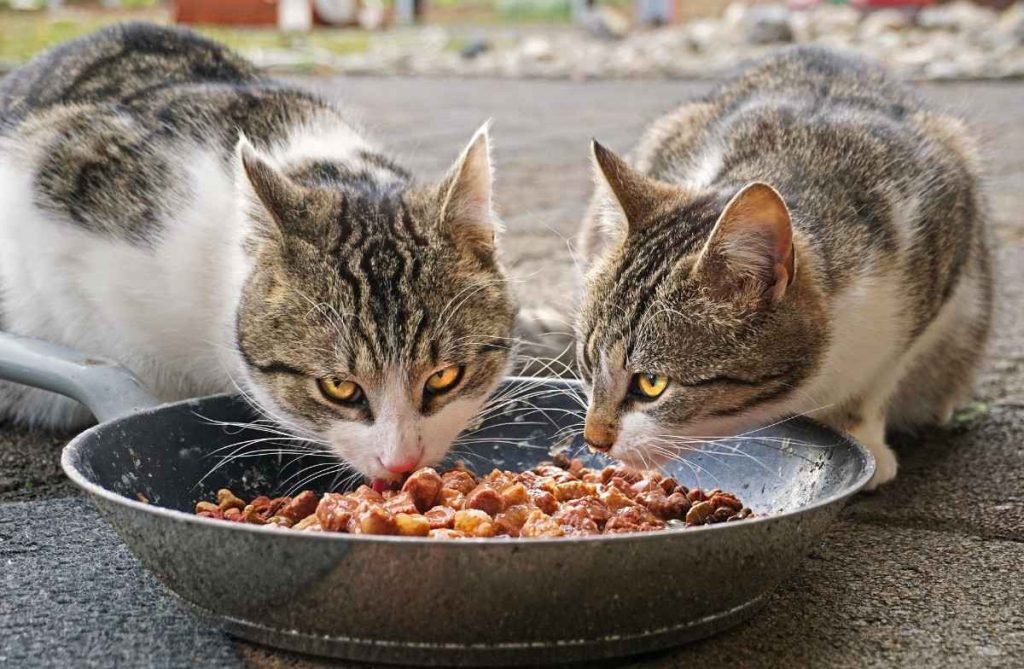As cat owners, we all want the best for our furry companions. While commercial cat food is convenient, more pet parents are turning to homemade cat food to ensure their cats get fresh, nutritious, and tailored meals. However, making homemade cat food isn’t as simple as sharing your dinner with your cat, it requires careful planning and knowledge of feline nutrition. In this blog post, we’ll explore the benefits, risks, and steps to creating balanced homemade cat food that keeps your cat healthy and happy.
Why Consider Homemade Cat Food?
Homemade cat food can be a great option for pet owners who want more control over their cat’s diet. Here are some reasons why you might consider making your own cat food:
- Quality Control: You know exactly what ingredients are going into your cat’s meals, avoiding fillers, artificial additives, or low-quality proteins.
- Dietary Customization: Homemade food allows you to tailor meals to your cat’s specific needs, such as addressing allergies, weight management, or health conditions.
- Freshness: Homemade meals are made with fresh, whole ingredients, which can be more appealing and nutritious for your cat.
- Bonding: Preparing meals for your cat can be a rewarding way to show your love and care.
Understanding Feline Nutritional Needs
Before diving into homemade cat food, it’s crucial to understand what your cat needs to thrive. Cats are obligate carnivores, meaning their diet must be primarily meat-based. Here’s a breakdown of their nutritional requirements:
- Protein: Cats need high-quality animal protein for muscle maintenance and overall health. Chicken, turkey, beef, and fish are excellent sources.
- Fats: Fats provide energy and support skin and coat health. Look for sources like chicken fat, fish oil, or flaxseed oil.
- Taurine: This essential amino acid is critical for heart health, vision, and digestion. It’s found in meat, especially heart and liver.
- Vitamins and Minerals: Cats require vitamins like A, D, and E, as well as minerals like calcium and phosphorus. These can be found in organ meats, bones, and supplements.
- Water: Cats have a low thirst drive, so wet food or adding water to meals is essential to keep them hydrated.
Risks of Homemade Cat Food
While homemade cat food has its benefits, there are also risks if not done correctly:
- Nutritional Imbalances: Cats have very specific dietary needs, and missing key nutrients can lead to serious health issues.
- Food Safety: Improper handling or storage of raw ingredients can lead to bacterial contamination.
- Time and Effort: Preparing balanced meals requires time, research, and commitment.
To mitigate these risks, consult your veterinarian or a veterinary nutritionist before starting a homemade diet for your cat.
Steps to Making Balanced Homemade Cat Food
Creating a balanced homemade cat food recipe requires careful planning. Here’s a step-by-step guide to get started:
1. Consult Your Veterinarian
- Discuss your cat’s specific dietary needs, including age, weight, activity level, and health conditions.
- Ask for recommendations on supplements to ensure your cat gets all essential nutrients.
2. Choose High-Quality Ingredients
- Protein: Use lean meats like chicken, turkey, or rabbit. Include organ meats like liver and heart for taurine and other nutrients.
- Fats: Add small amounts of animal fats or fish oil for omega-3 fatty acids.
- Carbohydrates: Cats don’t need carbs, but small amounts of cooked vegetables like pumpkin or carrots can provide fiber.
- Supplements: Include a balanced feline supplement to cover vitamins and minerals not found in meat.
3. Follow a Balanced Recipe
Here’s a simple recipe to get you started:
Basic Homemade Cat Food Recipe
- 1 cup cooked chicken (shredded or ground)
- 1 tablespoon cooked chicken liver (finely chopped)
- 1 teaspoon fish oil (for omega-3s)
- 1/4 teaspoon feline-specific vitamin and mineral supplement
- 1/4 cup water (to ensure hydration)
Instructions:
- Cook the chicken thoroughly and let it cool.
- Finely chop the liver and mix it with the chicken.
- Add fish oil, supplements, and water. Mix well.
- Serve immediately or store in the refrigerator for up to 3 days.
4. Store and Serve Safely
- Store homemade cat food in airtight containers in the refrigerator for up to 3 days or freeze for longer storage.
- Always thaw frozen food in the refrigerator before serving.
- Wash your hands and all utensils thoroughly after handling raw ingredients.
Tips for Transitioning to Homemade Cat Food
Switching your cat to homemade food should be done gradually to avoid digestive upset. Here’s how to make the transition:
- Start Slowly: Mix a small amount of homemade food with your cat’s current food, gradually increasing the proportion over 7-10 days.
- Monitor Your Cat: Watch for any signs of digestive issues, allergies, or changes in behavior.
- Adjust as Needed: If your cat doesn’t take to the new food, try different proteins or textures to find what they prefer.
Common Mistakes to Avoid
When making homemade cat food, it’s easy to make mistakes that can harm your cat’s health. Here are some pitfalls to avoid:
- Skipping Supplements: Without proper supplementation, homemade diets can lack essential nutrients like taurine, calcium, and vitamins.
- Using Raw Meat Without Caution: Raw diets can be risky due to the potential for bacterial contamination. Always handle raw meat safely or cook it thoroughly.
- Overloading on Carbs: Cats don’t need carbohydrates, and too many can lead to obesity or diabetes.
- Ignoring Hydration: Cats on dry food diets often don’t drink enough water. Ensure homemade meals include moisture to prevent dehydration.
When to Stick to Commercial Cat Food
While homemade cat food can be beneficial, it’s not the right choice for everyone. Consider sticking to commercial cat food if:
- You don’t have the time or resources to prepare balanced meals.
- Your cat has complex health needs that require a specialized diet.
- You’re unsure about meeting your cat’s nutritional requirements.
High-quality commercial cat foods are formulated to meet feline nutritional standards and can be a convenient and safe option.
Final Thoughts
Homemade cat food can be a wonderful way to provide your cat with fresh, nutritious meals tailored to their needs. However, it requires careful planning, research, and consultation with a veterinarian to ensure your cat gets all the essential nutrients they need to thrive. If you’re ready to take the plunge, start with a balanced recipe, follow safe food handling practices, and monitor your cat’s health closely. With the right approach, homemade cat food can be a rewarding way to show your love and care for your feline friend.
FAQs About Homemade Cat Food
Q1: Is homemade cat food better than store-bought food?
Homemade cat food can be healthier because you control the ingredients, but it must meet all your cat’s nutritional needs.
Q2: What ingredients should I include in homemade cat food?
A balanced recipe includes high-quality protein (chicken, turkey, or fish), small amounts of vegetables, and essential vitamins and minerals.
Q3: Can I feed my cat homemade food every day?
Yes, but only if the diet is nutritionally complete. Consult a veterinarian to ensure the recipe provides all necessary nutrients.
Q4: What foods should I avoid when making cat food?
Avoid onions, garlic, grapes, chocolate, and dairy, as these can be toxic or harmful to cats.
Q5: How do I make sure homemade cat food is safe?
Cook meat thoroughly, avoid bones, and maintain proper hygiene to prevent bacterial contamination.


